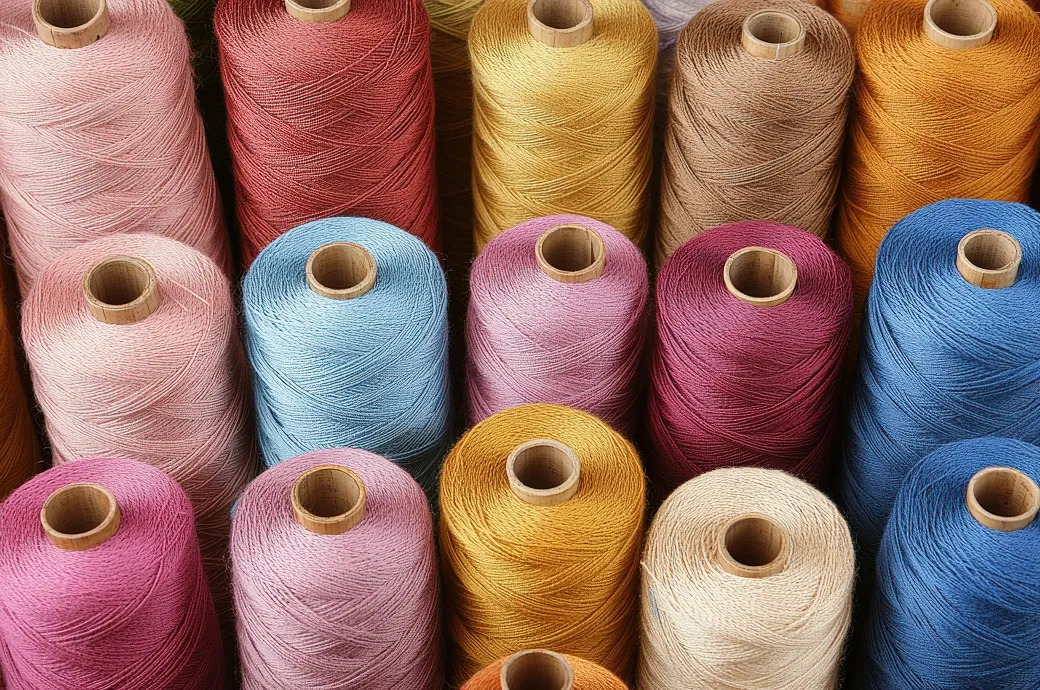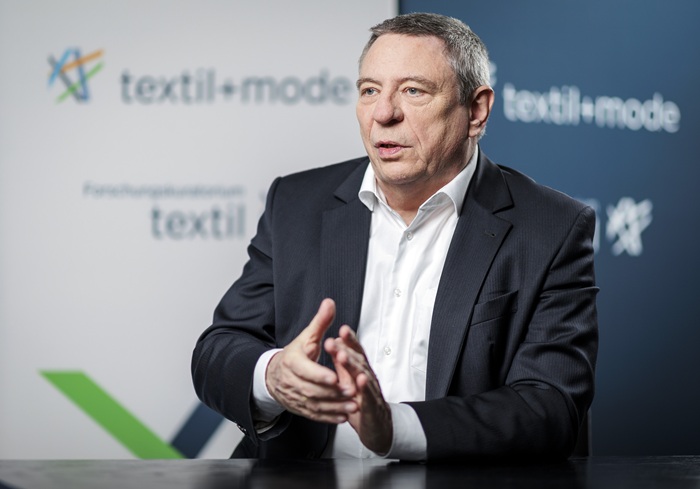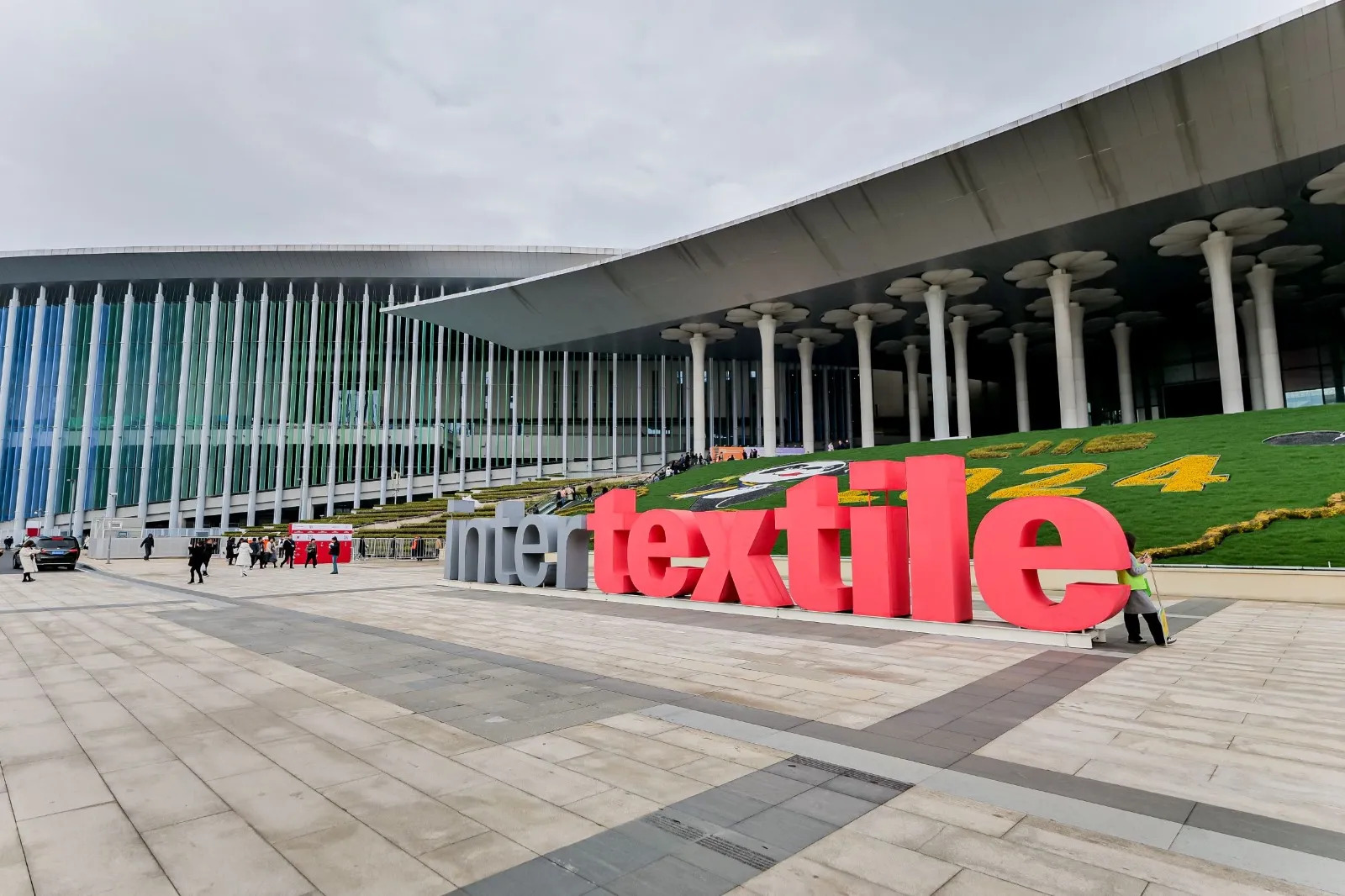FW
The Lenzing Group is recommitted to sustainability by implementing a further significant reduction of specific emissions by 2022. The commitment includes a 50 per cent sulfur emission reduction by 2022 as against 2014 and a 20 per cent reduction in chemical oxygen demand (COD) — which measures the amount of organic compounds in water— also by 2022.
The Group is also creating a specially designed eco-investment program to further its goal and the company is also looking at getting the EU Ecolabel for all of its production sites. In Lenzing’s Sustainability Report 2017 published recently, the Group’s CEO Stefan Doboczky stated, “Climate protection and thus the preservation of forests as carbon sinks storing CO2 are two key issues with respect to societal acceptance of the textile and nonwovens industry. In recent years, we have contributed to a positive shift in awareness in the industry thanks to our exemplary wood procurement policy based on sustainability principles.”
The report further noted. “Lenzing is committed to protecting ancient and endangered forests, improving the health and biodiversity of global forests and supporting the afforestation of degraded areas. The Lenzing Group will initiate and finance a first conservation solution by replanting degraded land in Albania. This project will involve a nursery, training for local communities, and monitoring of forest growth over a long period.”
The Group’s focus is also on a more circular economy. Lenzing projects a demand for wood-based cellulose fibres will increase by 5 per cent to 6 per cent each year to 2020. Lenzing’s chief commercial officer, Robert van de Kerkhof, noted, “We are at the beginning of the value chain and can contribute much to improving the situation thanks to our activities and a maximum level of transparency, especially with partnerships. We will also press ahead even more with the systemic transformation of our industry on the basis of our products, for example by expanding our business with lyocell fibres manufactured in a particularly environmentally responsible manner and innovative solutions such as our Refibra technology, which partly uses cotton scraps for fibre production,” he added.
The latest update and industry analysis of the Indian textiles and apparel sector for March, 2018 indicates textile contributes to 14 per cent of industrial production and 4 per cent to GDP. With over 45 million people, the industry is one of the largest source of employment generation in the country. The industry accounts for nearly 15 per cent of total exports.
The size of India’s textile market in 2016 was around $ 137 billion, which is expected to touch $ 226 billion market by 2023, growing at a CAGR of 8.7 per cent between 2009-23 (estimated). Production of raw cotton in India grew from 28 million bales in FY07 and further increased to 35.1 million bales in FY17. During FY07-17, raw cotton production expanded at a CAGR of 2.3 per cent During FY16 (till February 2017), domestic consumption was 30 million bales, while in FY15, domestic consumption of raw cotton stood at 30.4 million bales Raw cotton and man-made fibres are major segments in this category.
Khadi products sales increased by 33 per cent year-on-year to Rs 2,005 crore ($311.31 million) in 2016-17 and is expected to exceed Rs 5,000 crore ($776.33 million) target for 2018-19, as per the Khadi and Village Industries Commission (KVIC).
The production of cotton in India is estimated to increase by 9.3 per cent year-on-year to reach 37.7 million bales in FY 2017-18. The total area under cultivation of cotton in India is expected to increase by 7 per cent to 11.3 million hectares in 2017-18, on account of expectations of better returns from rising prices and improved crop yields during the year 2016-17.
Indian exports of locally made retail and lifestyle products grew at a CAGR of 10 per cent from 2013 to 2016, mainly led by bedding bath and home decor products and textiles. The textiles sector has witnessed a spurt in investment during the last five years. The industry (including dyed and printed) attracted Foreign Direct Investment (FDI) worth $2.68 billion during April 2000 to September 2017.
Global Organic Textile Standard (GOTS) recently hosted a popular round table for the textile sector in the US. GOTS is the stringent voluntary global standard for the entire post-harvest processing (including spinning, knitting, weaving, dyeing and manufacturing) of apparel and home textiles made with organic fiber and includes both environmental and social criteria.
GOTS round tables take place all over the globe to connect stakeholders and help with opportunities and provide feedback to GOTS on specific sectoral or regional needs. In May 2011, the United States Department of Agriculture formally recognised GOTS certification supporting the proper labeling of textiles sold as organic in the US.
GOTS certification enables consumers to purchase items that are third party certified organic from field to finished product. Bangladesh saw the highest increase in GOTS-certified facilities in 2017, amounting to 40 per cent.
There has been a 14 per cent increase in the number of chemicals on the GOTS Positive List, translating as more than 17,900 chemicals from 720 manufacturers. Over 1.74 million workers were employed in 19 GOTS-accredited independent certification bodies in 2017.
The top 10 countries with the highest number of GOTS-certified production units were: India, Bangladesh, Germany, Turkey, Italy, China, Pakistan, Portugal, USA and South Korea. India has a total of 1,658 GOTS-approved manufacturing facilities and has been the highest ranked GOTS country since 2008.
Commerce Minister Suresh Prabhu says the world is facing serious challenges as the US is taking protectionist measures and India needs to explore ways to boost exports. The comments came amid US President Donald Trump imposing $ 60 billion of tariffs on Chinese imports, and also increasing import tariff on steel and aluminium in case of India.
He further added India is a firm believer in a rule-based, transparent and participatory trading system and recently it has invited key WTO member countries here to discuss ways to reinvigorate the global trading body. When asked about impact of the possible trade war between the US and China he mentioned if any country takes a unilateral action, it would definitely take note of it and will deal with it appropriately.
President Trump imposed $ 60 billion of tariffs on Chinese imports, a move that could escalate the already tense trade relations between the world’s two biggest economies. By doing market research all must take steps to promote exports to explore new markets says Prabhu. India is meeting leaders of some African countries to promote exports in the region.
Brands like DKNY and Donna Karan have pledged to ban fur from their collections. They believe killing animals to make fashion doesn’t feel right. However, designers like Fendi and Burberry still use fur on the catwalk.
Going fur free has become a major move among brands and retailers seeking to advance their sustainability agendas. While animal welfare continues to become increasingly relevant among major apparel players, and consumers continue to demand more ethical shopping options, industry members are opting to omit angora, exotic skins and fur from their products.
Gucci has omitted fur from its entire product value chain. Gucci will no longer use coyote, dog, fox or any other animals that are bred or caught for fur. VF’s brands, including The North Face and Timberland, will no longer use angora, exotic leather or fur in their apparel and footwear products.
Alexa Chung, the UK model and designer known for her cozy sweaters, silky viscose dresses and vegan faux-fur outerwear, will not include angora or exotic skins in the collection’s apparel, accessories and footwear items. Michael Kors, which acquired Jimmy Choo this year, will curb the use of animal fur in its products. Any existing fur products manufactured will be phased out by the end of next December.
A group of four former Gilt executives have launched CoEdition, an online market, the first multi-brand outlet for plus-size consumers of apparel in size 10 and more. The company recently secured $4 million in seed funding. The company announced it delivers "a curated selection of stylish options at accessible price points frequently under-served in the traditional retail landscape." During its launch phase, it offered 1,000 products from 20 brands with an average price of $150.
Apparel, swim and intimates as well as accessories and shoes will be sold on the online site which is looking at expanding to product from 150 brands by the end of the year. Brands committed to the platform include Cosabella, Cynthia Rowley, Rachel Roy and Elie Tahari.
CoEdition was the brainchild of former Gilt employees: Brooke Cundiff, who is CoEdition's chief merchandising officer, was the former head of brand acquisition at the luxury flash sale site, while co-founder, Keith George, who is also CoEdition's CEO, was earlier Gilt's chief merchandising officer.
The two other CoEdition founders are Gilt Group founder Kevin Ryan and Gilt's former head of technology, Kent Helbig.
The aim was "to break down the barrier in retail and transform the industry." Keith George foresaw market opportunities for plus size and noted that many of the brands the company is working with are from the UK and Australia. The goal of the site is to be aspirational but accessible, he added.
Chinese consumers now make up around a third of all luxury purchases globally, correspondingly high end brands are forced to fine tune their China-specific marketing strategies. As per Chris Maier, MD of Analytics, Research & Insight at Publicis Media for Greater China, the vast social influence of the Middle Kingdom has shifted the ‘Made in China’ moniker to ‘Made for China’. More and more global brands, especially in the luxury sector, are creating China-specific products with local bents to cater to the key consumers.
A Publicis Media study of 1,000 luxury consumers across North Asia, including China, went deep into the way luxury resonates in the lives of consumers, including attitude, behaviour and time spent. One insight was that China continues to push ahead as the most digitally native and highly digital-social culture, particularly in the information gathering process before a purchase.
Maier says, across the consumer’s journey – from awareness to research and consideration to purchase – e-commerce reviews landed as the top touch point influence, barring reviews and recommendations on TV and OTV. Recommendations rated high, but the go-to point is online retail. To dig into the Chinese market, numerous luxury brands are now creating product lines targeted at the Chinese market. Maier points out to luxury fashion retailers LVMH and Loewe as first movers. Maier says China consumers are, justifiably, voicing specific wants for unique, locally relevant products to go with their new-found authority on the world stage. If brands are to successfully manoeuvre in this new consumer age, uniquely fitting the what, where and how together is the trifecta for success.
Italy-based C.L.A.S.S, specializes in integrating a new generation of eco values into fashion and lifestyle brands. The circular economy has always been at the core of C.L.A.S.S’ existence. It works with its partner mills such as Ecotec by Marchi & Fildi, Bemberg, Roica by Asahi Kasei and Tintex Textiles, which use technological breakthroughs to offer fashion materials that provide significant reductions in water during the manufacturing process.
In touting significant reductions in water, energy usage and CO2 emissions, C.L.A.S.S message has always been one of consistency but with today’s customers becoming increasingly environmentally mindful, the timing has never been better to bring awareness to the ways that responsible sustainability can be incorporated into a fashion or lifestyle brand.
In the last 10 years sustainable practices have merged into the overall circularity movement and have moved from vocabulary to real practice. Circularity in fashion can positively impact the bottom line when executed strategically. Cost savings globally could reach as much as 700 billion dollars for companies that embrace circular business models. In 10 years C.L.A.S.S has gone from words to innovation to materials that are truly sustainable and now fit into the circular economy.
The five companies have said they use US-grown cotton and manufacture in America.
Red Land Cotton owner by the Yeager family has been farming in Alabama for three generations. Now they are taking their best upland cotton and turning it into luxury linens. Their bed sheets and other home linens are crafted after heirloom lines and are manufactured with the farm’s finest cotton in the southern US.
The century + year-old Round House still supplies jeans, overalls and other work wear across the US. Named after the "round house" railroad repair station, the brand of jeans and overalls over time became a favourite among rail workers due to its ruggedness and affordability. The brand has been marketed in various stores, including J.C. Penney.
Raw Materials Design offers a variety of 100 per cent cotton items, including aprons, table linens and organising totes. They may are not be made in Texas anymore but are still made in the US. Texas Jeans have been manufactured in the US since 1979. Now located in North Carolina, all its components from the fabric, thread, buttons and zippers are made from vendors in the US.
Lawson Nickol was a sales manager for a U.S. jeans manufacturer. But he discovered his company’s jeans were made in Mexico. His nationalistic fervour gave birth to the All American Clothing Co. that produces high-quality clothing in the US at an affordable price.
"Tirupur textile industry has been reeling under tremendous pressure, as a result many suicide have been reported. The land which used to be a breeding ground for self-made entrepreneurs has its own share of challenges. Since past decade, the industry has been a victim of global economic recession, steep rise in yarn prices, closure of dyeing units and labour issues. S Govindappan, VP-South India Hosiery Manufacturers Association, highlighted aggressive international competition, business slowdown in the wake of demonetisation and GST have made survival a big question."
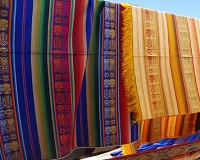
Tirupur textile industry has been reeling under tremendous pressure, as a result many suicide have been reported. The land which used to be a breeding ground for self-made entrepreneurs has its own share of challenges. Since past decade, the industry has been a victim of global economic recession, steep rise in yarn prices, closure of dyeing units and labour issues. S Govindappan, VP-South India Hosiery Manufacturers Association, highlighted aggressive international competition, business slowdown in the wake of demonetisation and GST have made survival a big question. To top it, competition from countries like Bangladesh and Vietnam has snatched global orders from Tirupur. Banks and private lenders have tightened their purse strings when it comes to helping small businessmen in crisis.
Tough times in Tirupur
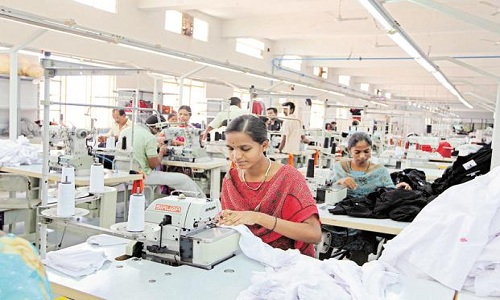
T R Vijaya Kumar, general secretary, Tirupur Exporters’ Association, added that it started with rupee appreciation or US dollar/Euro depreciation , ahead of GST implementation. It was a time when the knitwear industry was already losing its international competitiveness. The Centre promised that GST would bring down prices of raw materials but it did not happen.
While bigger companies can at least sustain the crises, small players are the ones who are the worst hit. They were not prepared to take the blow of drastic reduction in incentives given to exporters and stringent GST norms. M P Muthurathinam, President, Tirupur Exporters and Manufacturers’ Association, says small units, especially those who availed huge loans for expansion are finding it hard. According to sources, the Centre has not cleared more than Rs1,900 crore dues including GST returns, duty drawback and RoSL. But the same government has failed to restrain to its tax collecting agencies or banks to be lenient with entrepreneurs on repayments, averred Vijayakumar.
R Annadurai, Managing Trustee, Tirupur Thozhil Pathukappu Kuzhu (foundation for protection of Tirupur industries) said the organisation has formed a new wing consisting of a psychiatrist, a retired general manager of a nationalised bank, and an advocate to counsel entrepreneurs and workers who show suicidal tendencies and help them solve their financial woes.
While companies send a consignment, they have to pay 100 per cent GST to the government. But the buyer may take up to five months to settle the entire amount. Till then the company must be able to bear the burden of unpaid dues. K S Babuji, Secretary, South Collar Shirts and Inner Wear Small Scale Manufacturers Association, elaborates this was the practice for several years. But now tax collection has become stringent. Though government says GST for textiles is only 5 per cent, there are hidden taxes and they pay up to 13 per cent tax, which becomes a unbearable for small and new players.
Ultimately, it’s time the government relaxed tax norms and offer incentives to help entrepreneurs tide over the crisis. And as Raja M Shanmugam, President of Tirupur Exporters’ Association (TEA), says the Centre is making macro-economic corrections like demonetisation and GST. But it has failed to realise the importance of micro hand-holding supports like providing right rate for duty drawback and other incentives.


